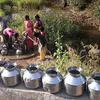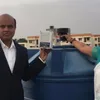Meet the man who has solved water woes of farmers in Bundelkhand, and given the parched region a new lease of life
For the last 25 years, Avani Mohan Singh's NGO Haritika has solved water issues, increased water availability, and augmented cultivable land while helping with infrastructure development to make villagers living in the backward districts of Buldelkhand self-reliant.
That Bundelkhand might become water scarce by 2030 is a serious problem that the agricultural community in this area is battling. Time, resourcefulness, and intervention can avert disaster, and the ideological Avani Mohan Singh has been tireless in addressing this grave issue. The local hero wanted to address Uttar Pradesh’s perennially parched region’s cry for help, and show others the way.
Avani, 50, founded Haritika, a non-government organisation in 1994, and has been working to solve issues affecting the rural poor. From interventions on natural resources management, and provisions of infrastructure to make villagers living in the backward districts of Bundelkhand region self-reliant, Avani and Haritika’s efforts are already making a difference.
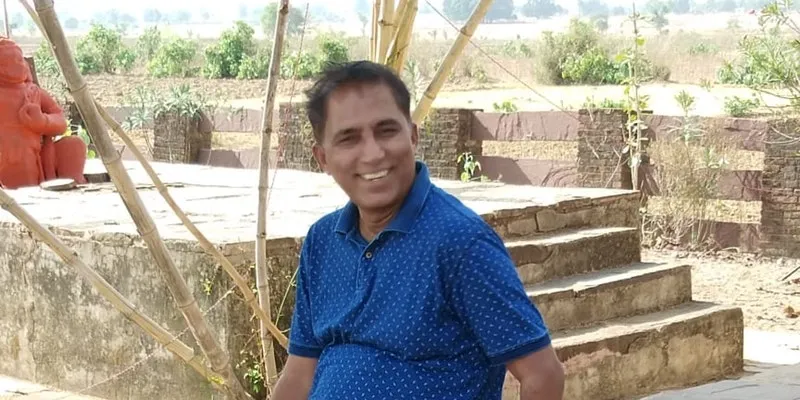
Avani Mohan Singh and his organisation, Haritika, are helping villagers in Buldelkhand.
“The Bundelkhand region of central India is the hotspot of water scarcity, land degradation, and poor socio-economic status. The whole region falls under a drought-prone zone, and ground water has been tapped for agriculture purposes through boring, resulting in depletion of ground water," Avani says .
"The major land use (68 percent) is for cultivation, out of which more than 57 percent is rain-fed/and unirrigated agriculture. Moreover, hard rock region with poor soil cover makes it uncultivable due to shortage of irrigation water. For irrigation purpose, the farmers take loan from local money lenders and return them with high rate of interest," he adds.
A land without water
A recent study, Vision Document for Bundelkhand, commissioned by the UP government, cautioned that Bundelkhand might become water-scarce by 2030. The region between River Yamuna and the northern part of the Vindhyan plains, it comprises seven districts - Banda, Chitrakoot, Hamirpur, Jalaun, Jhansi, Lalitpur, Mahoba, etc. A population of 78 lakh relies on perennial rivers like Yamuna, Ken, Betwa, Sindh, and Pahuj for its water needs. Over 75 percent of the population depends on agriculture as a primary livelihood, with 96 percent of the income generated from agriculture and livestock collectively. The study was conducted by the Church’s Auxiliary for Social Action (CASA) and Jan Kendrit Vikas Manch (a network of NGOs in Bundelkhand).
“Being a rain-fed area, it is significantly dependent on rainfall, which has progressively decreased over the past decade leading to severe droughts,” Avani says.
According to reports, there has been a 60 percent decline in rainfall in the past five years, and this concerned Avani and led him to start Haritika and address Bundelkhand’s water issues.
“The organisation works as a project implementation agency, and has, since 1994, done hundreds of water-related projects and touched the lives of seven lakh people in 500 villages in Madhya Pradesh and Uttar Pradesh,” Avani says.
The genesis
To initiate something at the grassroot level, an understanding of a region is of utmost importance. Since Avani has lived across the country as his father was in the Air Force, it helped him gain an insight on the issues, and the solutions.
Born in Assam, Avani studied in Gorakhpur, Delhi, Hyderabad, and Kanpur, with a short stint (primary school) in Baliya (UP), his hometown where he also looked after his ailing grandmother along with his father. During his masters in zoology in Kanpur, Avani spotted a newspaper ad of a one-year course by the Centre for Environment Education, (supported by the Ministry of Environment and Forests) - Training in Environmental Education. During the course, he worked with various environmental foundations and charitable trusts, and did exhaustive developmental field work across the country.
After a year of intensive field work, Avani got a ‘proper’ job, and joined a pharmaceutical company in Mumbai. Yet, his heart was still in developmental work, and Haritika became his tool to express his social responsibility.
“I chose Bundelkhand as I had experienced the difficulties in the region when I used to visit my uncle there. It was a very backward region, which is why I started there,” Avani adds.
His first project was helping the government supply drinking water to villages in the region.
Survival instinct
Funding woes could have derailed his plans. But Avani worked with national and international charitable trusts to address this. Haritika helps corporates like Coca Cola India, Livepure, Rio Tinto, Mahindra & Mahindra, HDFC Bank, etc in CSR activities that include project development, implementation, operations, and maintenance.
“Haritika develops interventions in natural resource management, integrated water management with an emphasis on water and sanitation, local governance issues, agriculture extension, child education, women empowerment and health, after assessing problems through dialogues with concerned parties,” Avani says.
Quenching farmers thirst
Avani is very proud about Haritika’s key role in the Integrated Watershed Project, which the Coca-Cola India Foundation launched in 2013. It involved rainwater harvesting and water conservation in the Bundelkhand region. The project is a joint effort of Coca-Cola India, International Crops Research Institute for the Semi-Arid Tropics (ICRISAT), and Haritika along with national partners National Research Centre for Agro-Forestry (NRCAF), district administration, and the local community.
“It helped improve the economic conditions of the residents of Parasai-Sindh region by increasing water availability and cultivable land,” Avani says.
“A series of eight check dams were constructed, which developed 125,000 m3 of storage capacity. After completion of the Parasai-Sindh watershed, the groundwater table on an average increased by around two to four metres as compared to non-intervention (or control watersheds) stage. This has increased cropping intensity by 30-50 percent, especially during the post-monsoon season,” he adds.
Thanks to the project, farmers have started harvesting wheat ranging from 3,500-4,000 kg per hectare (on an average), which has significantly improved income and livelihood. Farmers also shifted from low-water requiring crops to high-value crops.
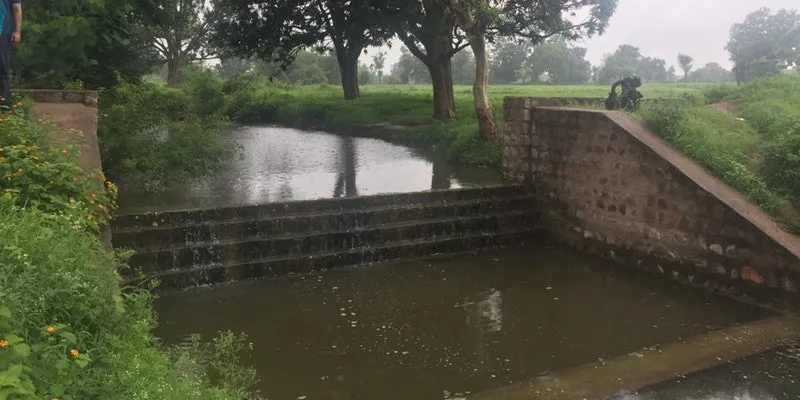
Check dam in Parasai-Sindh region
“Earlier, open wells hardly supported even one to two hours of irrigation during the Rabi season due to the low water column. Farmers (mainly women) spent 10 to 15 days or 40-50 hours irrigating one-hectare of wheat crop. Now, a majority of the wells support round-the-clock irrigation and it is done in a day (15-20 hours),” Avani explains.
A matter of responsible CSR
“Bundelkhand has been facing water stress, which impacts the livelihoods in the region. The main occupation of people in the Parasai-Sindh region is agriculture, however water scarcity due to inadequate rainwater harvesting impacted the growth of Rabi crops, resulting in poor grain development. The Integrated Watershed Project has increased water availability, promoted livestock, and boosted the animal population. These interventions have helped farmers increase income through higher crop yield,” says Rajiv Gupta, programme manager, Coca-Cola India Foundation.
Kalu, a 57-year old farmer from Bachhauni village of Parsai-Sindh says that the increased yield is 50-65 percent, and it is due to the check dams and renovation of traditional water-harvesting tanks. "This has drastically increased the storage capacity for rainwater (up to over 100,000 cubic metres today), and has managed to raise the groundwater table by 3-5 metres benefitting crop intensification (from 80 per cent to 140 per cent), thereby enhancing crop yield by 30 percent in both Kharif and Rabi seasons,” Avani reveals.
Another farmer, Lallu Pal (40) looks back at a time when villages did not have enough wheat for their own consumption. Now, with the project, farmers can cultivate, sell, and have wheat for their own consumption too. He now also grows peanuts and urad dal apart from wheat.
“Earlier, the output was around six to seven quintals but now it has increased to around nine to 10 quintals,” says Pal.
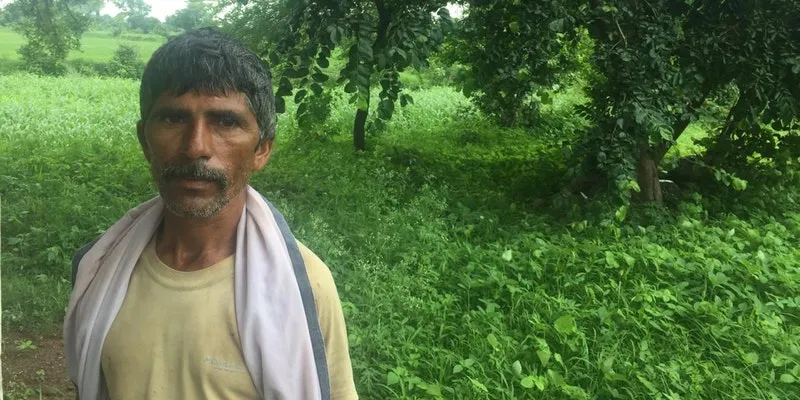
Lallu Pal, a farmer in Bundelkhand
NITI Aayog recently commended the watershed management project in Jhansi as Best Water Practices in 2018 saying that the increased groundwater level (by 2-5 metres) has made 100 acres of land cultivable by constructing check dams, farm ponds, and renovating existing structures in eight locations.
Avani adds, “Haritika has been able to provide safe drinking water to 300 villages. The organisation has also developed a fruit orchard on a 2,000-acre land in 33 villages of Jhansi and Chhatarpur, UP, and MP, providing livelihood to farmers in the area.”
Stressing on how such interventions can change livelihoods, Avani says, “Contrary to popular belief that it is extremely difficult to work in a backward area, it is possible to keep working if you don’t mind being in the field (constantly). That is why I was able to successfully run Haritika for the past 25 years.” A work-in-progress, for Avani, social entrepreneurship and responsibility is hard work, but he believes it has helped him evolve into a better human being.
The author travelled to Bundelkhand on the invitation of Coca-Cola India Foundation.
(Edited by Suruchi Kapur Gomes)


